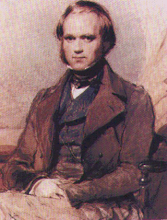
In this chapter Darwin addressed the potential problem that sterile hybrids posed to his idea of common descent and evolution by means of natural selection.
Hybrid crosses, for example, a horse with a donkey, generally result in sterile offspring, in this case, the mule (shown here), a situation which would seem to be an evolutionary dead-end. The prevailing view of Darwin's time was that species were independently created and separate and that the phenomenon of sterile crosses existed to (quote) "prevent the confusion of all organic forms."
How could all organisms have a common ancestry, and how could natural selection act, given the phenomenon of sterile hybrids? Darwin acknowledged that the sterility of hybrids could not possible be of any advantage to them and "could not have been acquired by the continued preservation of successive profitable degrees of sterility." He then described a host of hybrid crosses that show a variety of responses and makes the case that sterility is not universal, and the variation in hybrid response counters the idea that hybridism was specially endowed to prevent "confusion of all organic forms" thus opening the door to other explanations.


No comments:
Post a Comment